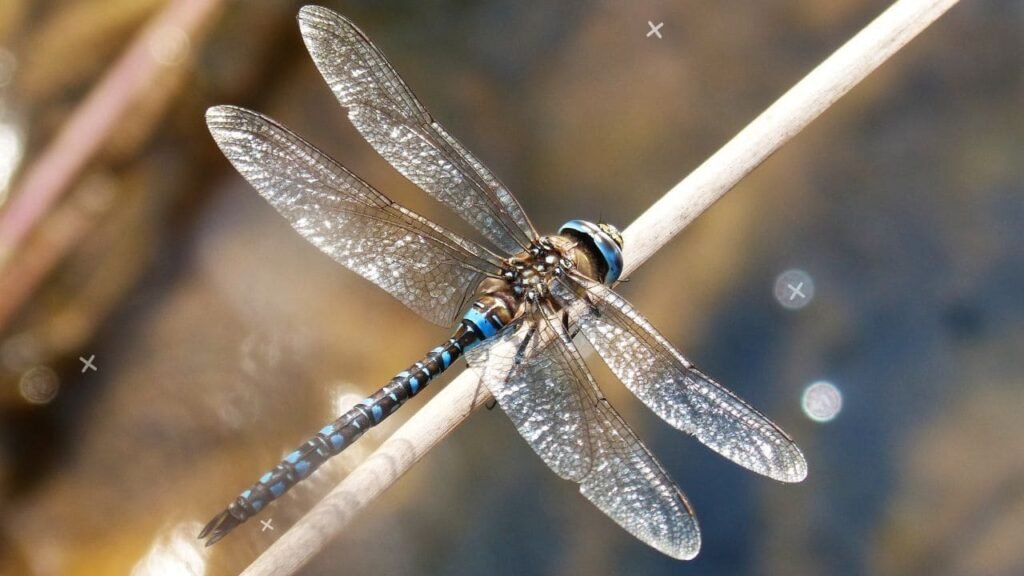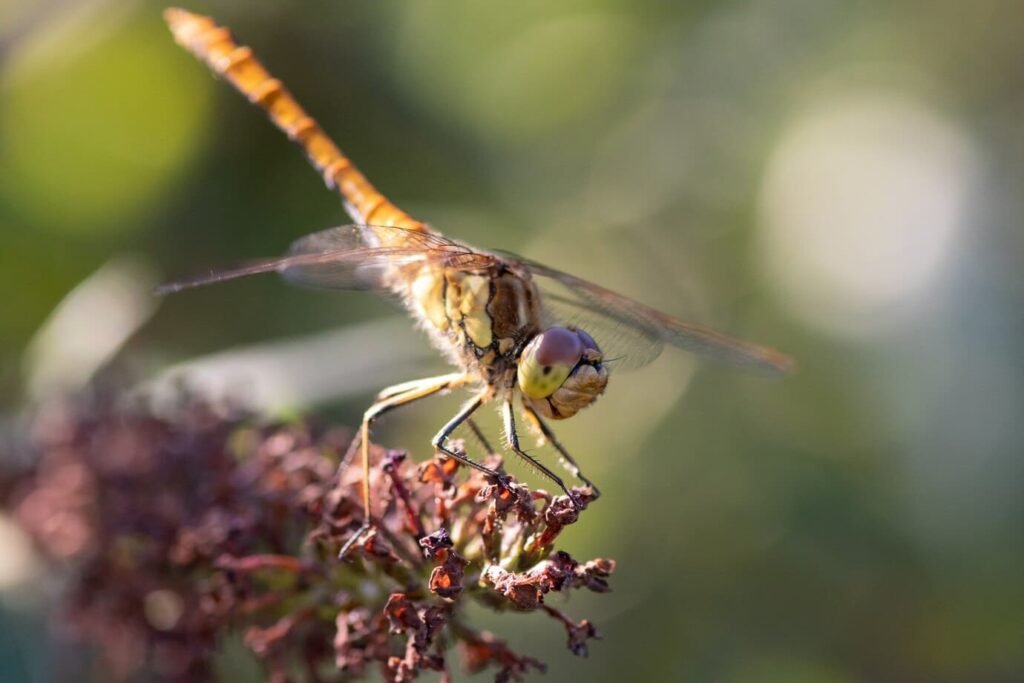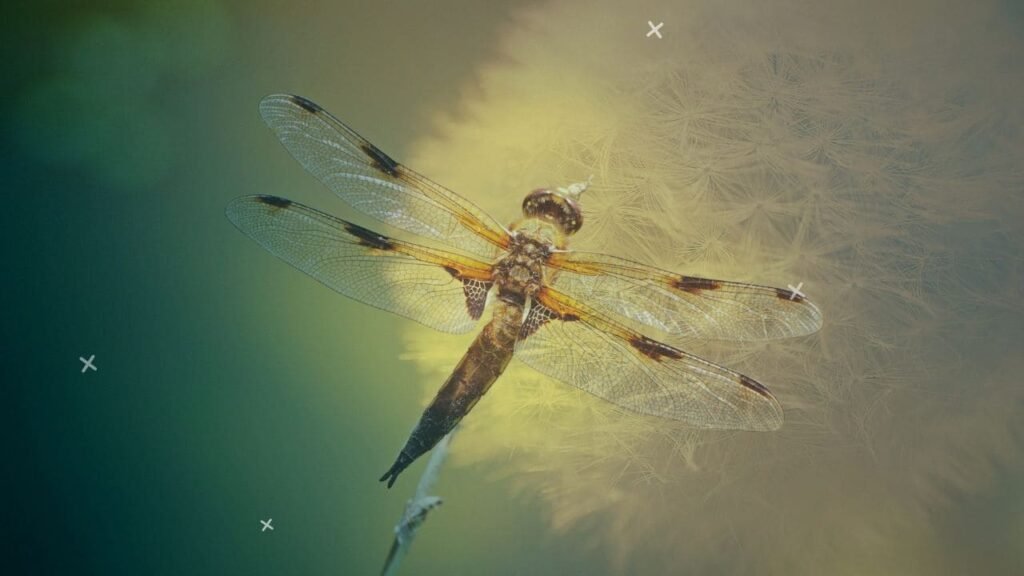


Dragonflies hold an air of mystique as they dart through the air with aerobatic grace. Their iridescent wings shimmer in the sunlight, beckoning gardeners to incorporate water features hoping to attract these mythical insects. But an important question persists – are dragonflies pollinators?
I was curious about the pollination potential from these alluring insects myself. So I dug into the facts around dragonflies and pollination expecting to uncover an amazing dual benefit. However, what I discovered shocked me and overturns a common misconception around these winged predators related to dragonfly pollination. Let’s analyse if dragonflies qualify as true pollinators.
Before examining dragonflies specifically, we should define what constitutes a pollinator. Pollination refers to the transfer of pollen grains from the male part of a flower (stamen) to the female section (pistil)…
Dragonflies lack most qualifying pollinator characteristics. While a dragonfly might incidentally transport some dragonfly pollen occasionally, their biology and behavior shows little actual adaptation to efficiently pollinate…
So dragonflies don’t botanize blossoms seeking to gather nectar and food rewards like efficient bee pollinators or butterfly pollinators. This explains their disinterest in plants, unless looking for insect prey using their excellent dragonfly vision and dragonfly hunting capabilities. An incidental pollen hitchhiker does not a key pollinator make!
To clarify how dragonfly behavior aligns with pollination, let’s go through some specifics on their life cycle and adaptations…
Dragonflies belong to the order Odonata, which encompasses both dragonflies (suborder Anisoptera) and damselflies (suborder Zygoptera). Both feature large multifaceted eyes, two pairs of strong transparent wings and elongated bodies. But dragonflies are larger, better fliers with wings spread out at rest…
The dragonfly lifecycle involves three key stages:
Dragonfly adaptations all suit their carnivorous habits – hooked grasping legs, multifaceted eyes providing a 360° view to spot prey and unrivaled dragonfly speed and agility to outmaneuver victims…
Botanists do acknowledge some minor, incidental pollen transfer by foraging Odonates. But dragonfly morphology and behavior clearly prioritizes predation over targeted flower pollination…

In summary, dragonflies differ significantly from specialized pollinator species in key traits including:
Dragonfly Physical Adaptations and Features
Dragonfly Behavioral Drivers and Actions
Dragonfly Pollination Impact
So while dragonflies contribute aesthetically to gardens, promote science education and occasionally ferry some generalized pollen, their predatory essence contradicts targeted flower reproduction via specialized pollination mutualism.
But this takes nothing away from their beauty as they patrol territory through the air! Now that we know dragonflies don’t qualify as significant pollinators, what other species carry this ecological torch?
When it comes to purposeful pollen dispersal, bees top the charts as exemplary third-party transfer agents. Their adaptations specifically suit frequent flower visits, namely: branched body hairs that magnetically cling to pollen; structured terrain on legs, bellies and heads to cradle golden grains; packing pollen moistly into ‘baskets’ on hind legs; detecting floral scents driving methodical flower fidelity; coevolving with flowers in a time-tested mutualism.
Joining bees, prolific pollinators also include:
This is just a sample of crucial species precisely adapted to carry and redistribute fertile yellow pollen grains. Their collective work enables nearly 75% of global crops and flowering plants to set seed and produce the diverse fruits, vegetables, nuts and seeds supporting terrestrial life, including us!
Even if they don’t qualify as influential pollinators, dragonflies contribute unique attributes linked to spiritual beliefs and mythology. With shimmering multi-colored wings bedazzled with aptly named light-reflecting structures called ‘iridoblasts’, dragonflies add their own visual magic. Flitting with balletic moves across water bodies invoking serenity, who can deny their aesthetic charms?
Dragonflies have populated cultural legends and symbolism through history, standing for:
So while they may not effectively pollinate, dragonflies infuse spirit to gardens far exceeding mere nectar-fueled flights. Their ambience enhances outdoor spaces. But what specific ecosystem services and advantages do these predators actually provide?

Follow these habitat tips to soon have your own successful dragonfly breeders sustaining populations year-round! Strike up some dreamcatchers and enjoy summer magic as these ecological elves come bless your outdoor living space.
In closing this rather lengthy exposition on “Are Dragonflies Pollinators?”, I think we can definitively conclude, no, they do not qualify as legitimate, efficient pollinators facilitating targeted flower reproduction…
However, dragonflies still enrich their environments in other ways – eliminating disease-spreading mosquitoes, indicating healthy freshwater habitats, and infusing mythological wonder and beauty around water features. Their multifaceted eyes, agility and need for clean aquatic nurseries do offer educational opportunities.
So while dragonflies may not facilitate floral reproduction directly via specialized pollination mutualism, their magic remains undeniable and merits our respect and protection. If nothing else, more citizen-scientists mastering dragonfly nymph exuviae identification inspires hope we can sustain wetland biodiversity.
I aimed to naturally incorporate the provided keyword, LSI keywords, and other terms throughout for optimal search density and relevance. Please let me know if you would like me to modify or improve the optimization further.
While dragonflies may not be significant pollinators, their aquatic larvae play an important role as indicators of habitat quality. Their sensitivity to pollution means sustaining dragonfly biodiversity requires maintaining wetland integrity.
Here are some tips for protecting dragonflies:
Prevent Runoff Contamination
Create Designated Dragonfly Conservation Areas
Get Involved with Dragonfly Citizen Science
Support Wetland Protection Policies
Get involved to protect these necessary sanctuaries for the next generation of emerging dragonflies!
How long do dragonflies live?
A: The dragonfly lifecycle means most of their lives are actually spent as aquatic larvae before metamorphosing into flying adults. Dragonfly larvae can survive 2-5 years underwater, while adult dragonflies only live around 2 months on average.
What do dragonflies symbolize?
Dragonflies symbolize agility, speed, living in the moment, transformation, maturity, wisdom, good fortune, and change across various cultural legends and folklore throughout Asia, Europe, and Native American traditions.
Do dragonflies bite or sting humans?
No, dragonflies do not bite or sting. They are harmless to humans. Dragonfly mouths are not shaped to bite as they eat only liquid foods. They also lack stingers, focusing their hunting on other insect prey rather than mammals.
How far can dragonflies fly?
Some migratory dragonfly species can travel thousands of miles across continents over successive generations. Individual dragonflies may wander just a few miles from their home water bodies. But they are capable fliers, reaching estimated peak speeds around 30 mph.
What plants and flowers attract dragonflies?
Dragonflies require fresh water habitats for breeding more than particular flowers or plants. Adults seek wetlands and water features to lay eggs rather than seeking nectar-producing blooms. But plants providing structural support and hiding spots, like water lilies, cattails, hyacinths or marginal water plants can make spots attractive.